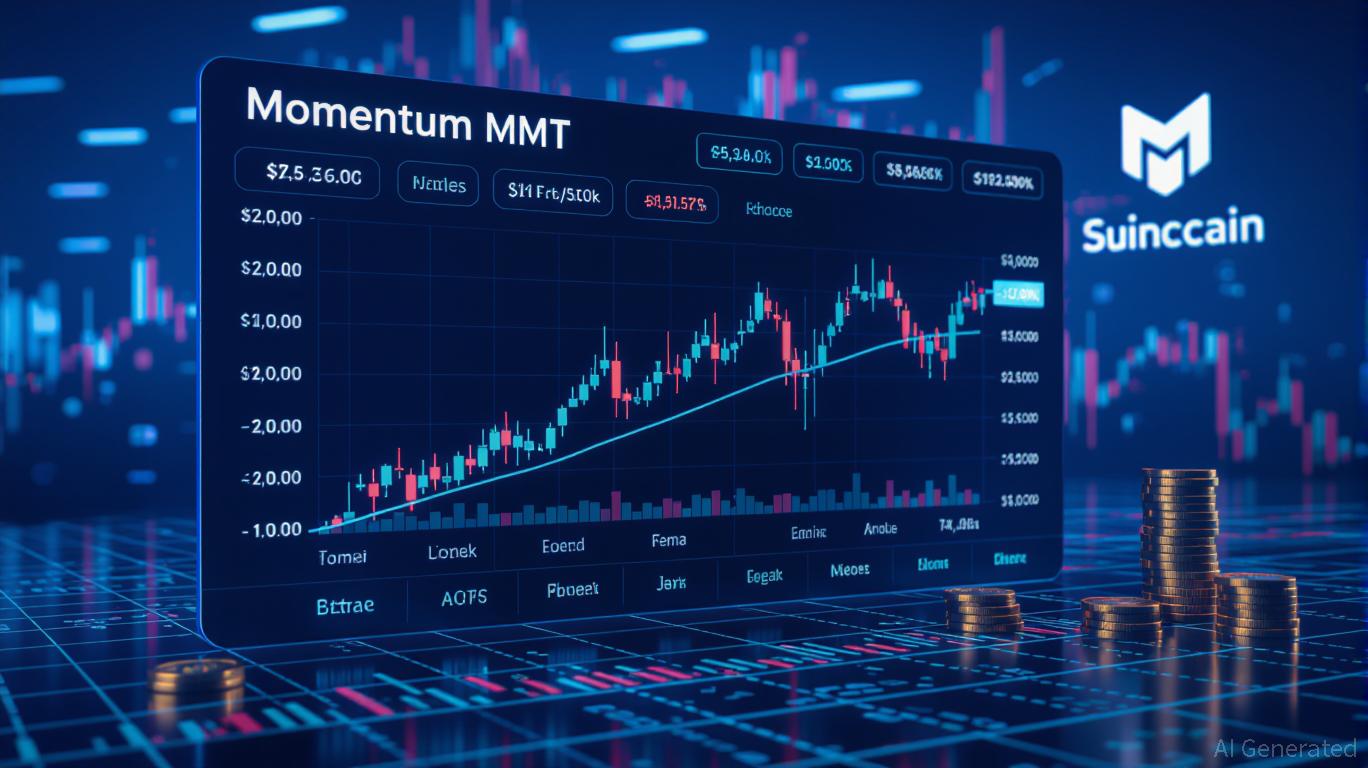Zcash Halving and Its Impact on the Market: Price Movements After Halving and Investor Sentiment
- Zcash's 2025 halving triggered a 750% price surge to $400+, driven by privacy-focused demand and technical upgrades. - Unlike Bitcoin's stagnant $103k price, Zcash's 28% shielded supply reflects growing demand for privacy amid regulatory scrutiny. - Investor psychology shifted toward privacy coins, with Zcash outperforming Bitcoin as capital rotated during market volatility. - Analysts predict Zcash could reach $580 if it breaks $500 resistance, contrasting Bitcoin's deflationary model with utility-drive
Halving events, which reduce the rate at which new coins are created, have long fascinated the cryptocurrency community, as they are believed to restrict supply and fuel price speculation.
Zcash’s Post-Halving Momentum: Privacy at the Forefront
In late 2025, Zcash’s price movement stood out from the broader crypto downturn, climbing more than 750% from under $50 in early September to over $400 by the end of October, based on a
This rally was driven by both technical improvements and evolving investor interests. The shielded portion of Zcash’s supply now makes up 28% of its total circulating coins (4.5 million ZEC), indicating a deliberate move toward privacy as regulatory oversight increases for transparent blockchains, according to the

Investor Sentiment: FOMO and Shifting Capital
The recent Zcash rally highlights a notable change in investor mindset. Analysts have observed that Zcash often moves inversely to
Past Bitcoin halvings have shown similar psychological patterns. For example, the 2020 halving was followed by a dramatic bull run to record highs, driven by institutional interest and speculative excitement, according to a
Arthur Hayes, BitMEX’s co-founder, has even forecasted that Zcash could reach $10,000 per token, citing its resistance to quantum attacks and expanding user base, according to the
Zcash vs. Bitcoin: Utility Versus Scarcity
Bitcoin’s post-halving rallies have traditionally been linked to its limited supply and its reputation as digital gold. The halvings in 2012, 2016, and 2020 each set off extended bull markets, with prices eventually reaching new peaks, according to the
This difference is significant. While Bitcoin’s main appeal is as a value store, Zcash’s advantage is its ability to support confidential transactions and comply with changing privacy regulations. As one analyst put it, Zcash’s reputation as “encrypted Bitcoin” captures its dual nature—offering Bitcoin-like economics alongside advanced privacy, according to the
Market Forces and What Lies Ahead
The interaction between Zcash’s technical progress and investor sentiment creates a feedback loop. Enhanced privacy features attract more users, boosting demand and prices, which then draws in additional speculative capital. This is reflected in Zcash’s trading activity, which increased by 2.46% to $1.37 billion, surpassing Bitcoin’s falling volume, according to the
Looking forward, Zcash’s future will hinge on its ability to sustain its
Conclusion
The 2025 Zcash halving has reignited discussions about privacy’s role in digital finance. Its post-halving rally, powered by both technological advancements and changing investor preferences, underscores the rising appetite for assets that combine practical use with scarcity. While Bitcoin’s history offers a useful lens for comparison, Zcash’s distinct value proposition points to a new model—one where privacy is central to market trends rather than a peripheral concern. As regulatory challenges grow and institutional attitudes shift, Zcash’s adaptability will determine whether its current surge is a brief outlier or the start of a new chapter for privacy-oriented cryptocurrencies.
Disclaimer: The content of this article solely reflects the author's opinion and does not represent the platform in any capacity. This article is not intended to serve as a reference for making investment decisions.
You may also like
Defying Market Swings: $NNZ's Tactical Approach to Crypto
- Bitget report highlights Noomez's $NNZ token as a 2025 bull run contender with 280x price potential via its 28-stage presale model. - Deflationary mechanics include token burns at key milestones, 15% locked liquidity, and double staking rewards for early adopters. - Community-driven features like "Noom Recruit" referral program and transparent Noom Gauge dashboard aim to build trust and adoption. - Analysts note $NNZ's structured approach addresses meme coin volatility while aligning with 2025 trends fav

Growing Institutional Focus on Momentum (MMT)
- Momentum (MMT) token surged 1330% post-Binance listing, driven by $10M funding and institutional backing from Coinbase , OKX, and Jump Crypto. - On-chain data shows $12B 30-day DEX volume and $265M TVL, but analysts warn of speculative risks amid 224% 24-hour volatility spikes. - Institutional capital shifts toward Bitcoin/ETH staking ($6.1B combined inflows) raise questions about MMT's long-term viability without proven real-world utility. - Upcoming ve(3,3) DEX and RWA integrations aim to enhance MMT's

AAVE -3.37% 7-Day Surge Despite Year-Long Downtrend as Market Integrates
- Aave's AAVE token fell 0.89% in 24 hours to $207.68 despite a 3.37% 7-day rally amid strategic integrations. - Aave Horizon's partnership with VanEck's VBILL tokenized Treasury fund enables institutional-grade collateral via Chainlink and Securitize infrastructure. - The integration creates arbitrage opportunities with 4.84%+ potential returns through VBILL collateralized RLUSD borrowing strategies. - Backtests show Aave outperformed BTC by +14.54% over 30 days post-announcement, with 67% positive excess
Kyo Achieves $1 Billion Valuation: Wagering on Cross-Chain DeFi Integration During Industry Upheaval
- Kyo Finance secures $5M Series A at $1B valuation, aiming to unify blockchain liquidity via cross-chain interoperability. - DeFi faces innovation vs. security tensions as projects like Mutuum advance infrastructure while crises like Stream Finance's $93M loss expose systemic risks. - Industry responds with risk mitigation tools (e.g., RedStone ratings) and modular infrastructure reforms to address contagion risks from interconnected lending markets. - Kyo's valuation reflects institutional confidence in